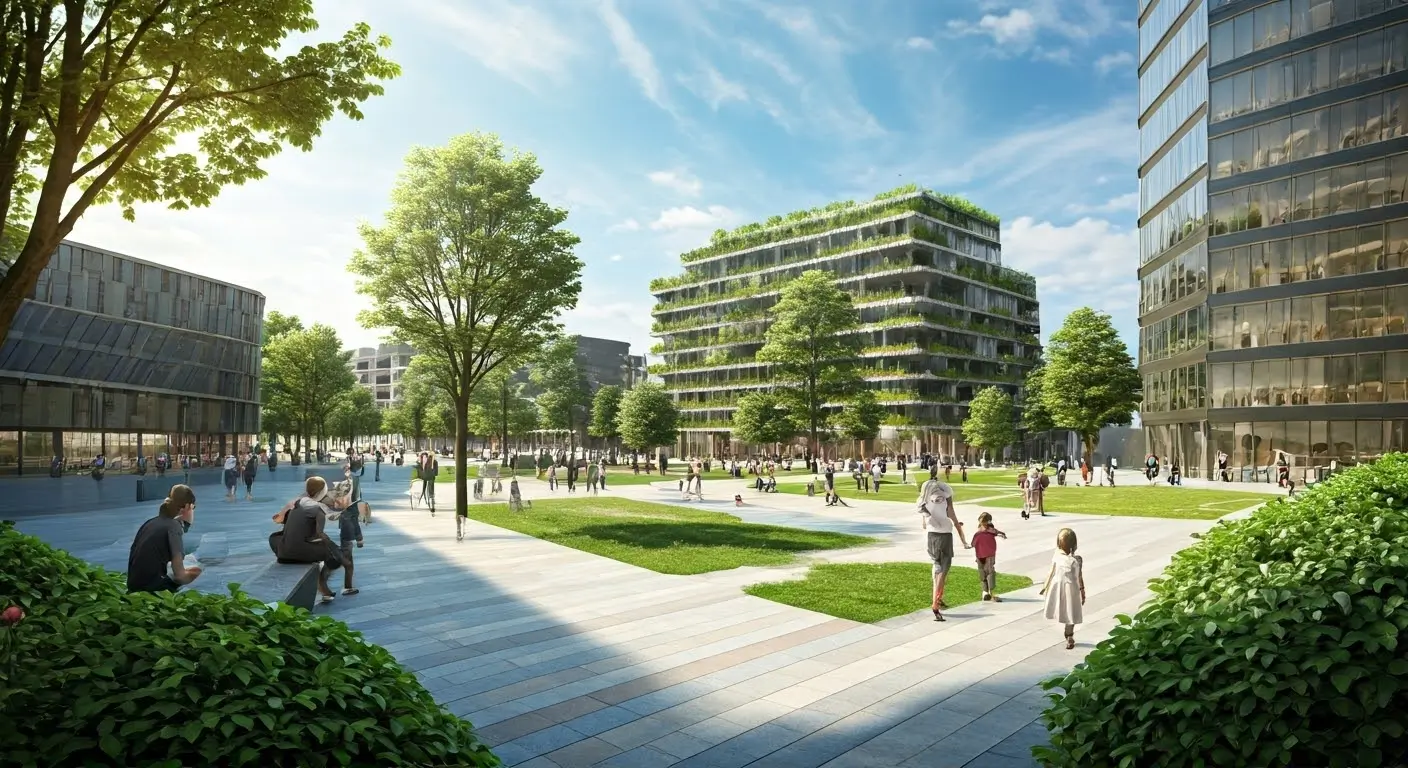Key Highlights
- IBM and SEforALL have partnered to develop AI-powered solutions for sustainable urban development.
- The Open Building Insights (OBI) platform provides a visual representation of building data, supporting informed urban planning decisions.
- Modeling Urban Growth (MUG) is an open-source AI model predicting urban expansion using diverse datasets.
- These tools aim to aid policymakers in addressing energy and infrastructure needs, particularly in developing regions.
- This collaboration leverages AI’s potential to drive sustainable urban development and address climate change impacts.
Introduction
IBM is taking a big step to use technology for a better future. Through its IBM Sustainability Accelerator program, it is teaming up with Sustainable Energy for All (SEforALL) to support vulnerable communities. Together, they aim to tackle some of the biggest challenges by building smart AI tools that will assist in city planning, urban development, and energy transition efforts. Specifically, their goal is to aid urban planners and policymakers in developing areas. They want to give them the knowledge and tools they need to build stronger and sustainable cities.
The Partnership Between IBM and SEforALL

IBM and SEforALL recognized the growing need for sustainable urban development and climate action. This is especially important because of rapid global urbanization and climate change. So, they teamed up in 2022. Their partnership brings together the power of AI and data analysis to solve big problems in urban planning.
They started this work through the IBM Sustainability Accelerator program. The main goal was to create AI solutions for sustainable urban development in Africa and India. IBM and SEforALL worked hand in hand during the IBM Garage phase of the project. They used IBM’s Garage methodology. This is a teamwork approach for developing and carrying out projects.
Objectives of the Collaboration
A key reason for this partnership is the shared goal of both groups to use technology for good social change. As a corporate social responsibility leader, John Matogo at IBM is focused on tackling environmental issues with its social impact program, the IBM Sustainability Accelerator. This mission fits well with SEforALL’s goal to provide sustainable energy for everyone.
The collaboration mainly aims to use AI and data analytics to help people understand complex city life better. By giving tools that show details about buildings, energy use, and future city growth, IBM and SEforALL want to aid smart decision-making in urban planning.
In the end, this partnership wants to help in areas like energy transition by offering useful data from the German Aerospace Center that can guide policies and investment in clean energy and sustainable infrastructure. This is especially important for developing regions as they try to meet the energy needs of their growing populations while moving towards a more sustainable future.
Expected Outcomes for Urban Development
This collaboration aims to create real change, especially in areas with fast-growing cities. By giving urban planners and policymakers advanced AI tools, the partnership focuses on:
- Improving Energy Planning: The goal is to help understand buildings and how much energy they use. This can lead to better energy planning and encourage the use of sustainable energy.
- Encouraging Urban Growth: Spotting where cities will grow in the future helps plan for sustainable infrastructure. This ensures that people have access to clean energy, good transportation, and other necessary services.
These AI tools can significantly change how cities grow and manage their resources. They support the development of sustainable and stronger urban settings. By providing useful insights from a lot of data, the project aims to help make better decisions and work towards a more sustainable future for everyone.
How AI Contributes to Sustainable Urban Planning

At the core of this project is how Artificial Intelligence (AI) can change urban planning. AI can look at large and complex data to help us understand city life better. It can predict future trends and help make smart choices for sustainable urban development.
Using AI in urban planning is more than just working with numbers. It helps us learn about energy use, what kind of infrastructure we need, and the possible effects on the environment. This helps policymakers and urban planners make decisions that are based on solid data.
Analyzing Urban Data for Energy Solutions
The OBI platform is a key tool in this project. It helps tackle important data gap challenges in energy planning, especially in developing areas, while also addressing urban planning challenges. It gathers data from many sources, like Open Energy Maps, to give a complete picture of buildings, energy use, and where help is needed.
The OBI platform, an interactive online platform, uses a new AI model made by IBM WatsonX AI, which runs on IBM Cloud. This model looks at visual and geospatial data to identify if buildings are for homes or businesses, utilizing OBI’s interactive map. This information is vital to understand energy needs and to plan for better electrification and energy-saving projects.
By offering easy access to this data through a user-friendly map, OBI helps decision-makers create better energy solutions. It leads to smarter choices about using renewable energy, improving energy efficiency programs, and modernizing the grid. This all supports a cleaner and more sustainable energy future for cities.
Predictive Modeling for Future Urban Growth
AI helps us understand today’s cities and plan for the cities of the future. IBM and SEforALL use predictive analytics with their Modeling Urban Growth (MUG) project, which incorporates structural data. This tool is open-source and aims to predict where urban areas will grow, representing a significant step in urban planning.
MUG works by using a strong AI model that learns from different types of data, including satellite images, population numbers, and details like road networks, influenced by various regions such as the Democratic Republic of the Congo. It looks at past trends and finds the main reasons for urban growth. MUG then creates maps that show where urban expansion is likely to happen.
This information is very important for city planners. By knowing where cities might grow, leaders can prepare for future energy needs. They can plan for better transportation and make sure there are enough resources for new people. All of this helps reduce harm to the environment and improve living conditions.
Conclusion
In conclusion, the partnership between IBM and SEforALL, supported by Damilola Ogunbiyi, is a big step for sustainable urban development in the Middle East. With AI technology, urban planning can be more efficient and better for the environment. By looking at data and predicting growth, this project wants to build smarter and more sustainable cities. The impact of AI on local communities should be good. AI can improve energy solutions and make urban infrastructure work better. This new way shows how AI can change the future of urban development and promote sustainable practices worldwide.
Frequently Asked Questions
What Are the Key Benefits of AI in Urban Development?
AI helps city growth in a few ways. It makes energy use more efficient. It also helps plan the infrastructure needed for cities. Additionally, it supports smart decisions for acting on climate issues. With data sharing between cities, it allows for better and more eco-friendly ways to grow urban areas.
How Will This Initiative Affect Local Communities?
This urban exchange plan plans to help local communities, especially those in need. It focuses on building cities that are fair for everyone and can handle climate changes. By encouraging smart choices, it gets people involved in creating a better future for their cities.
Can AI Truly Make Urban Planning More Sustainable?
Yes, AI provides new ways to solve problems in urban planning. AI solutions for sustainability help improve the use of renewable resources and manage water better. This leads to a more sustainable built environment.
What Are the Challenges in Implementing AI Solutions?
- To use AI well, we must tackle some tech problems linked to adopting it.
- We need to make sure we can access important data.
- It’s essential to set up helpful policies.
- Lastly, we should encourage everyone involved to take part.
How Can Other Organizations Participate or Contribute?
Collaboration is essential. Organizations can look for ways to work together. They might join the AI Alliance project. They can also help with initiatives like Open Building Insights on IBM Cloud. This will support making data and AI accessible for sustainable urban development.

